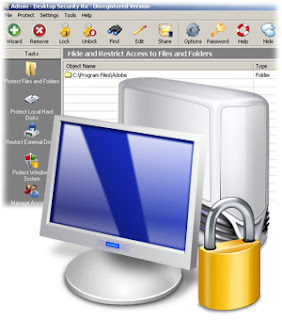
Many web players in the market are running for taking early lead in the Desktop share as they have on web. o name few there are Adobe, Google, Mozilla, Fluid, MS. The concept of Desktop presence always fascinate the developers nad for commercial use as user would always have the app/site right on his Desktop, otherwise he has to open a browser and pull down the site to check his mails,videos. "A web browser is only good for Web browsing" and not for your important, daily, must do stuffs like mail, Social networking, Work etc. For all this you always want a desktop App that sits right in front of your eyes. AIR, Prism, Google Gears, Fluid are some of the new techs which helps user to shift his key interest websites from web to his desktop. but out of all these I only think AIR has all the possible capabilities which a desktop app would have and other solutions are more of like answers to some useful ideas and not the complete package. Lets take one by one
Adobe AIR
Adobe AIR is complete solution for desktop versions of your web sites/app as it has all the features of a desktop app from installer to native file access. An AIR app can have a jazzy look n feel as flex can be very easily used in an air app and thats too with added functionalities of Drag n Drop, File systems Access, context menus, integrated web browser(webkit), Multiple windows support, HTML controls etc.
1. It provide a complete installer to user with all the installer options from Licence agreement to Shortcut options to custom installation paths.
2. AIR applications can be built on plane HTML/JavaScript only and not necessarily with MXML/AS(Flex).
3. AIR applications ahve Drag n drop support natively. It allows developer to bundle the dragged data and pass it on the OS native drag manager to handle it OS way, it gives a consistent behavior.
4. Also allows the internal Drag n Drop powered by Flex.
5. AIR apps can have multiple windows which allows user to do things parallaley.
6. It also has a Browser integrated which is the open source webkit.
7. Allows to add custom context menus.
8. Wide variety of HTML controls.
9. Taskbar, System tray presence , tooltips, unistallation via Add/Remove Panel.
10. App would have native file system access.
11. Print Support
Mozilla Prism
Prism is based on a concept called Site Specific Browsers (SSB). An SSB is an application with an embedded browser designed to work exclusively with a single web application. It doesn’t have the menus, toolbars and accoutrements of a normal web browser. Some people have called it a "distraction free browser" because none of the typical browser chrome is used. An SSB also has a tighter integration with the OS and desktop than a typical web application running through a web browser.
1. You can have only shortcut on your Desktop. To Uninstall webapps simply delete the sortcut.
2. Its only your website running in a browser with no chrome and no extra buttons, toolbars.
3. No Native filesystem access.
4. Print support
Google Gears
Google Gears Beta is an open source browser extension that enables web applications to provide offline functionality using the following JavaScript APIs.There are three major API components to Google Gears
1.A local server that caches and serves application resources (HTML, JavaScript, images, etc).
2.A database (powered by SQLite) that stores the data offline.
3.A worker thread pool that synchronizes data in the background.



1 comment:
BTW, Gears now has a the ability to drop a shortcut onto the desktop with an associated icon:
http://almaer.com/blog/gears-future-apis-desktop-shortcut-api
This coupled with the offline functionality and embedded database makes SSBs easily built with Gears. Anything else you'd like to see in Gears to make this easier?
Best,
Brad Neuberg
Gears
Post a Comment